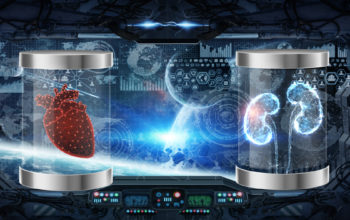
Date: 15th May 2020
One of the big challenges in the biomedical field is the delivery of the next generation wave of drugs and therapeutics in a specific and targeted manner. Now scientists have coupled a bacterial injection system with a light-controlled molecular switch, enabling the delivery of ‘cargo’ proteins into eukaryotic cells in unparalleled spatial and temporal resolution.
Biohijacking is becoming a popular trend for developing drug delivery systems. Macrophages are a natural targets to biohijack and we have reported several such developments in this arena but others methods are also being explored such as the repurposing of tumour cancer membranes to encase oncolytic viruses. Many bacteria use ‘tiny’ injection needles (injectesomes) to transfer bacterial proteins into host cells, and this secretion system, called a type 3 secretion system (T3SS), has also previously been successfully used to deliver protein cargo into a wide variety of eukaryotic target cells.
The limitation to this however, is that up until now T3SSs lack spatial and temporal control – in effect the molecular switch is always ‘on’. Now scientists led by Andreas Diepold from the Max Planck Institute for Terrestrial Microbiology, Germany, in collaboration with Thorsten Stiewe from Philipps University, Germany, have used optogenetic (light-induced) interaction switches coupled to a T3SS in a system called LITESEC-T3SS (Light-induced translocation of effectors through sequestration of endogenous components of the T3SS). In effect, this system enables the rapid, specific, and reversible activation or deactivation of the T3SS upon illumination.
The injectisome is an essential virulence factor for many pathogenic Gram-negative bacteria. They are assembled on entry into a host organism, but remain inactive until they contact a host cell. Upon contact, the injectisome exports two translocator proteins that form a pore in the host membrane, and a pool of so-called T3SS effector proteins are translocated into the host cell; short N-terminal secretion signals mark effector proteins for delivery by the T3SS.
The team had previously discovered that some of the essential cytosolic T3SS components are constantly exchanged between the cytosol and the injectisome. They theorised that if they could reversibly sequester one of the cytosolic proteins, they could establish a new way of regulating the T3SS.
To do this, they initially combined one of the T3SS cytosolic components, called SctQ – the bait protein, with one partner domain of an optogenetic interaction switch, and targeted the other partner domain to the bacterial inner membrane (IM) by adding an N-terminal transmembrane helix.
They then developed two complementary systems to control T3SS activity in both directions, the first LITESEC-supp – here the bait protein (SctQ) was tethered to the membrane anchor in the light, and therefore not available to interact with other components of the T3SS (meaning the system was activated in the dark). The reverse system LITESEC-act – where the bait protein was released from the membrane upon irradiation with blue light, allowing the assembly of T3SS and enabling secretion of proteins.

By replacing native SctQ in bacteria with the genetically modified version i.e. bait SctQ, the team developed stable LITESEC strains. In in vitro secretion assays the LITESEC-supp system showed a high level of secretion when grown in the dark, but strongly reduced secretion when grown under blue light, and had normalised secretion efficiencies of up to 24% and 95% in light and dark conditions, respectively.
Conversely, the LITESC-act system showed strong activation of T3SS protein secretion upon illumination, while retaining the tight suppression of secretion in the dark, with normalised secretion efficiencies of up to 66% vs. 16%.
Light-controlled export of heterologous T3SS substrates
The team then wanted to test the ability of each system to control the export of heterologous cargo. Here, they engineered a plasmid expressing a heterologous cargo protein, initially they used a reporter fused to the short N-terminal secretion signal. After successfully showing the cargo protein was exclusively exported in light conditions by the LITESEC-act strain, and exclusively in the dark by the LITESEC-supp strain, they wanted to test the system more thoroughly.
In the final experiments, the team chose to transport either β-lactamase or an apoptotic protein in both of the systems into eukaryotic cells (HEp-2 cells which are cancer-derived). The results showed that translocation of the cargo proteins in all cases was entirely light-dependent, and there was no visible export under inactive conditions. Furthermore, strong apoptosis was induced within 1 h after infection under active conditions, indicating that the apoptotic cargo was viable once inside the cell.
Conclusion and future applications:
The LITESEC-T3SS constitutes a new method to control protein secretion and translocation into eukaryotic host cells. The team are now using the system to develop further applications, with a view to providing a new system that will translate into medical applications.
The safe delivery of cargo is vital for many biomedical purposes such as vaccinations, immunotherapies, disease treatments and gene editing. Ongoing safety experiments will undoubtedly prove a crucial step towards clinical applications, however the LITESEC bacteria in which secretion was not activated had few observable effects on the host cells, even following prolonged incubation of the cells post-infection. Furthermore, there are many ongoing efforts to develop less immunogenic bacterial vectors which would prove useful with respect to this system – certainly, biocompatibility is high on the agenda.
With many delivery systems available and being developed including synthetic, nature-derived or indeed biohybrids, we are likely to see a repertoire of tools emerge in this field. Which one to use may depend on the given application and cargo however, we often find that nature does it best! The element of temporal control this system affords should place it highly on the fast-track list for development.
For more information please see the press release from the Max Planck Institute for Terrestrial Microbiology
Lindner, F., B. Milne-Davies, K. Langenfeld, T. Stiewe and A. Diepold (2020). “LITESEC-T3SS – Light-controlled protein delivery into eukaryotic cells with high spatial and temporal resolution.” Nature Communications 11(1): 2381.
https://doi.org/10.1038/s41467-020-16169-w


